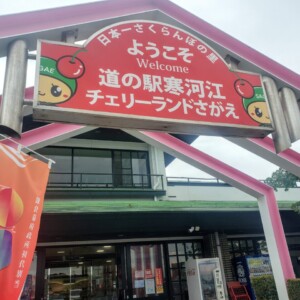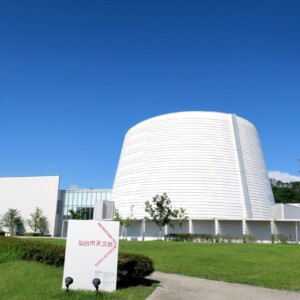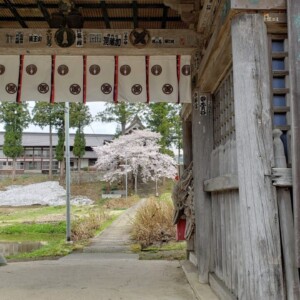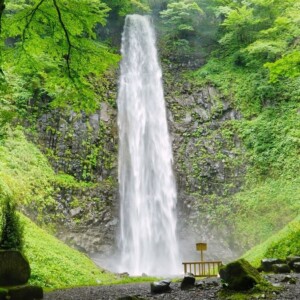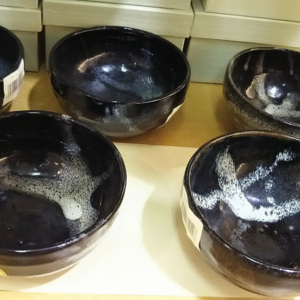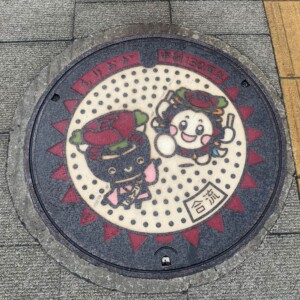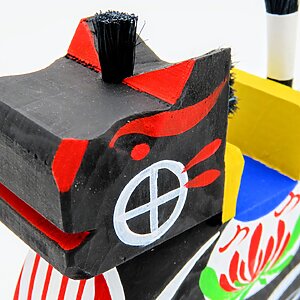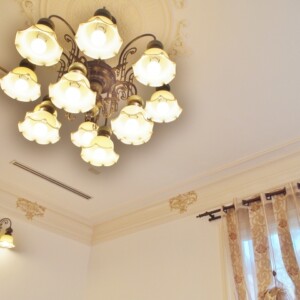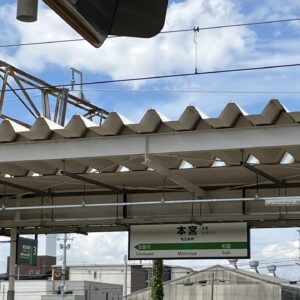
The battle for bone flesh unfolded in Yokote Basin: "Three Years of Second Year Battle" [Akita Prefecture]
table of contents
- 1 The Kiyohara clan defeated the Abe clan, which ruled Okurokugo, and rose to become the general of Mutsu Province.
- 2 Intense internal conflict breaks out due to complicated blood relations.
- 3 Internal conflict in the Kiyohara clan and the birth of the Oshu Fujiwara clan
- 4 Otoriyama Ruins, which was the home base of the Kiyohara clan
- 5 Numafence, a strong fence castle that Kiyohira and Yoshiie's combined forces could not break through
- 6 Kanazawa Stockade, the fiercest battleground of the Battle of the Third Year
- 7 Later Sannen Battle Kanazawa Museum
- 8 “Heian no Kaze Wataru Park” was developed in the area of “disturbed wild goose flight”
- 9 A military picture scroll that conveyed the Battle of the Third Years to future generations: ``Pictures from the Battle of the Third Years''
Yokote Basin, located in Yokote City, is located in the southeastern part of Akita Prefecture, and is bordered by Iwate Prefecture on the east side.
During the Heian period, it was under the control of the Kiyohara clan and is known as the "three-year war." During the Edo period, it was the territory of the Kubota Domain (Akita Domain), and was an intersection of highways such as the Ushu Kaido that branched out from the Oshu Kaido and connected Akita and Aomori, so senior retainers of the Kubota Domain were assigned to Yokote Castle, and flourished as the center of the political and economics of the southern region of the domain.
Asamai and Masuda, located geographically at the heart of the Yokote Basin, were also flourishing as distribution hubs.
The Kiyohara clan defeated the Abe clan, which ruled Okurokugo, and rose to become the general of Mutsu Province.
the Kiyohara clan, who was said to have been a local official, established several castle fences (such as the fort and the administrative functions), including the Otorii fence (national designated historic site), the Kanazawa fence (Kanezawa fence), and the Numa fence (numa fence), governing the area, and also entered into a marriage relationship with the Abe clan
The Abe clan was a powerful clan that controlled the area around the current Oshu city to Morioka city, which was said to be the Okuroku district on Iwate Prefecture, but friction began to arise with the imperial court that was trying to control the vested interests of the northern products.
As the conflict between the two sides led to a dispute over tax collection, the Imperial Court sent Minamoto no Yoriyoshi to Mutsu Province (Munokuni/Aomori Prefecture, etc.) and began conquering the Abe clan. However, Abe's strength was strong in fighting in his own territory and did not go well.
So Yoriyoshi asks for help from the Kiyohara clan, a powerful clan in the Dewa Province (Dewanokuni/the Sea of Japan area of the Tohoku region), and somehow manages to defeat the Abe clan.
the "First Nine Year War" that broke out between 1051 and 1062 , and as a result, the Kiyohara clan acquired the Okuroku district, the area controlled by the Abe clan, and acquired the position of the military commander of the Mutsu Province Naval Base.
Intense internal conflict breaks out due to complicated blood relations.
The Kiyohara clan had grown in power, but in addition to their complicated blood relations, they were also involved with Minamoto no Yoshiie, the provincial governor of Mutsu Province at the time and the son of Minamoto no Yoriyoshi, leading to a complicated struggle for supremacy. to start.
First, Takesada, the son of Takenori Kiyohara, who was very active in the Battle of Nine Years, takes in the widow of Tsunekiyo Fujiwara, who died on Abe's side, as his wife. Her wife had a son, Kiyohira, who was also welcomed into the Kiyohara clan.
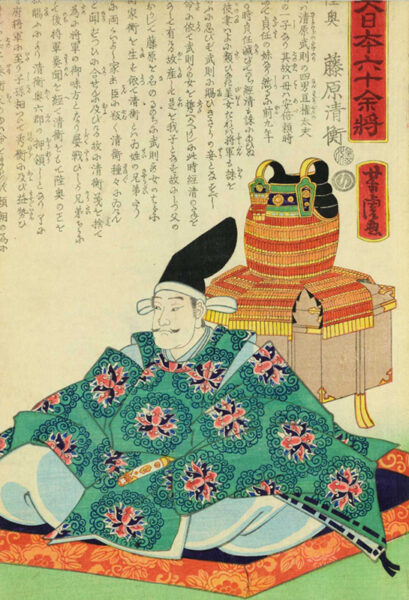
When Kiyohira was taken in by the Kiyohara clan, Takesada already had his eldest son, Sanehira, and later, Iehira was born to Kiyohira's mother. There were three brothers with complicated blood relations between his parents.
Takesada was succeeded by his eldest brother, Masahira, and at first the rule was peaceful, but Kiyohira and Iehira began to rebel against the succession that Masahira had decided. In 1083, while Masahira was on an expedition to Dewa, Kiyohira and Iehira attacked his mansion. This was the beginning of the ``Later Sannen Gassen.''
At this time, Minamoto no Yoshiie joined Masahira and the situation seemed to be settled, but Masahira suddenly died during another expedition. According to Yoshiie's ruling, the Kiyohara clan's fertile land in the south was given to Kiyohira, and the poor land in the north was given to Iehira.
Internal conflict in the Kiyohara clan and the birth of the Oshu Fujiwara clan

Iehira, dissatisfied with the ruling of his territory, tries to kill Kiyohira. Kiyohira, whose wife and children were killed, fled to Yoshiie, and Takehira, the younger brother of his father Takesada, joined Iehira's side, creating a system of Kiyohira and Yoshiie versus Iehira and Takehira. .
After fighting at the Numa Fence (Yomonogawa, Yokote City), the Iehira and Takehira forces were stationed in the Kanazawa Fence (Kanazawa, Yokote City), which was excellent in defense in 1087, but the Iehira and Takehira forces were defeated by the attacks on the military supplies of the Kiyohira and Yoshiie forces, and the "Three Years of the Second Year" ended.
There is a sequel to this story. Minamoto no Yoshiie intervened in the internal conflict of the Kiyohara family without receiving instructions from the imperial court, and was dismissed as Mutsu no kami by the imperial court. However, Minamoto no Yoshiie, who rewarded his followers for risking their lives by giving them their own money, rose to great fame and is thought to have been a factor in the later establishment of samurai society.
Additionally, although the only one Kiyohira, who is of both the Kiyohara and Abe clan, survived, he was marked as a dangerous figure by the imperial court for a while. After that, Kiyohira changed his surname from Kiyohara to his biological father's surname Fujiwara the Oshu Fujiwara clan , which ruled the entire Tohoku region , and built up the Hiraizumi golden culture that lasted for about 100 years.
Otoriyama Ruins, which was the home base of the Kiyohara clan
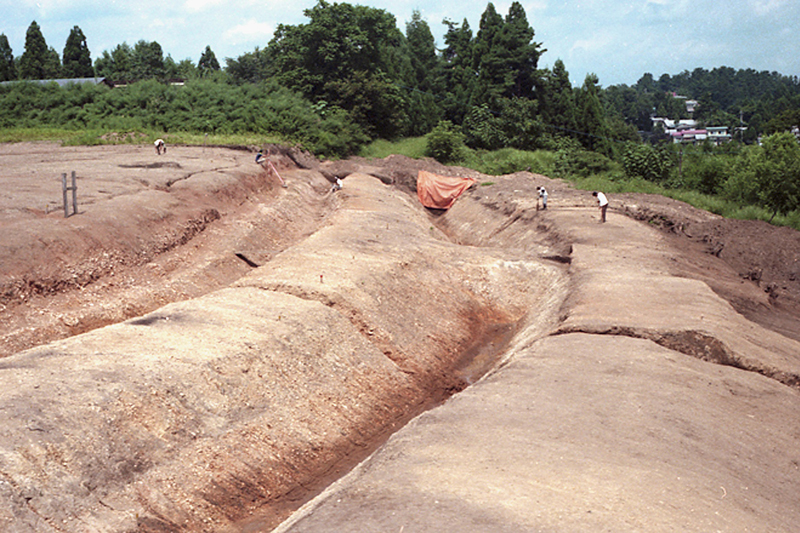
Otorii no Saku is the home base of the head of the Kiyohara clan, Kiyohara Mitsuyori (Takenori's older brother) and his son Yorito (Otoriyama Taro Yorito). It is located on the eastern edge of the central part of the Yokote Basin, approximately 2 km northeast of the current Yokote City Hall, on three hills called Mt. Otorii, Mt. Kokichi, and Daidokorodate. It is being built. The old Ushu Highway runs through the foothills, making it convenient for transportation, and surrounded by rivers on three sides, making it an excellent location for defense.
While it is difficult to determine the location of the Kiyohara clan's castle fence, the ``Otorii fence'' appears in the late Heian period military chronicle ``Mutsuwaki,'' and excavations have revealed that it dates back to the battle of the previous nine years. Many remains of residences and artifacts that are thought to date from the same period as the Battle of 2017 have been unearthed. In addition, with the results of subsequent research, this location was confirmed as the site of the ``Otorii fence''.
Otoriiyama Ruins <Information>
- Otoriyama Ruins (Otori Park)
- Location: Otori-cho, Arasaka-cho, Yokote City, Akita Prefecture
- Phone number: 0182-32-2403 (Yokote City Board of Education, Education and General Affairs Department, Cultural Properties Protection Division, Buried Cultural Properties Section)
- Freedom to stroll
- access:
- Railway: Take a route bus from Yokote Station on the JR Ou Main Line and get off at Arasaka bus stop, then walk for about 7 minutes. From Yokote Station, walk for about 35 minutes.
- Car: Approximately 10 minutes from Akita Expressway/Tohoku Chuo Expressway Yokote IC
Google Map
Numafence, a strong fence castle that Kiyohira and Yoshiie's combined forces could not break through
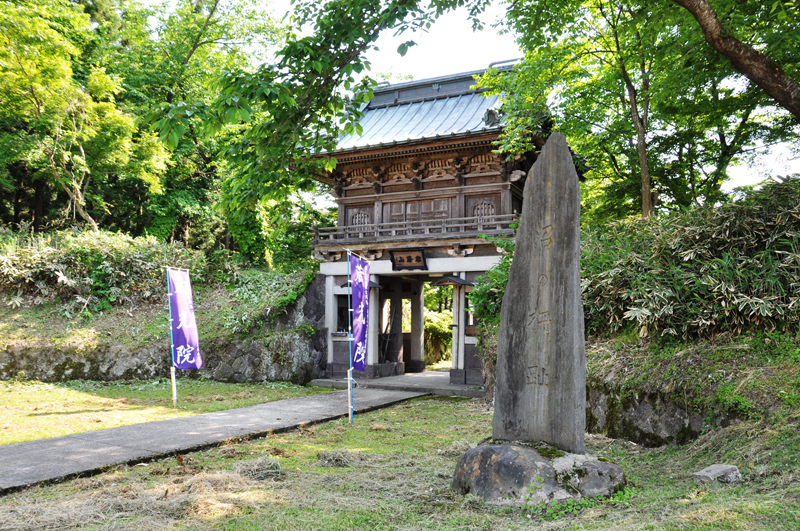
``Numa-zaku'' is a castle fence located in Numadate, a place along the Omonogawa River that flows along the western edge of the Yokote Basin, where Iehira temporarily barricaded himself during the Battle of the Second Year. Numafence was an extremely strong fort that withstood the persistent attacks of Kiyohira and Yoshiie's allied forces, but the allied forces were forced to retreat due to cold and hunger.
In Numadate, there are ruins of a castle called Numadate Castle, which was the base of the Onodera clan in the Middle Ages, and there is a strong theory that this is where the ``Numafence'' was located, but it has not been confirmed yet.
Information
- Facility name: Swamp fence ruins
- Location: Around Zokoin, 429 Numadate, Omonogawa-cho, Yokote City, Akita Prefecture
- Phone number: 0182-32-2403 (Yokote City Board of Education, Education and General Affairs Department, Cultural Properties Protection Division)
- *This is the temple grounds, and only the outer edge can be visited.
- access:
- Railway: Approximately 30 minutes by taxi from Yokote Station on the JR Ou Main Line
- Car: Approximately 20 minutes from Akita Expressway/Tohoku Chuo Expressway Yokote IC
Google Map
Kanazawa Stockade, the fiercest battleground of the Battle of the Third Year

"Kanazawa Sage" was the place where the biggest fierce battle was the "Three Years Battle." The Iehong and Buhing forces moved from the "Swamp Fence" and barricaded them here, and in the end they were unable to withstand the attack on military supplies by the Kiyohong and Yoshiie forces, and fell.
The picture scroll, "The Second Three Year Battle" (Ghosanen Kassene Words/National Designated Important Cultural Property), which later depicts the "Three Year Battle," also depicts a cruel story about Yoshiie killing all the women and children who escaped from the "Kanazawa Fence."
Kanazawa Castle is located on a small hill in the Kanazawa district, north of the center of Yokote City, and is a medieval castle that appeared at the end of the Ashikaga period about 370 years after the "Three Years War," but the remains of the main castle, Ninomaru, Kitanomaru, and moats have been excavated.
Its location resembles the Kanazawa fence described in "The Three Years Battle Pictures," and has long been considered to be the site of the Kanazawa fence. Many years of excavation surveys by the Yokote City Board of Education have discovered artifacts from around the time of the third year battle, but they have not been identified as the "Kanazawa Fence."
Excavations are still ongoing, so we look forward to future results.
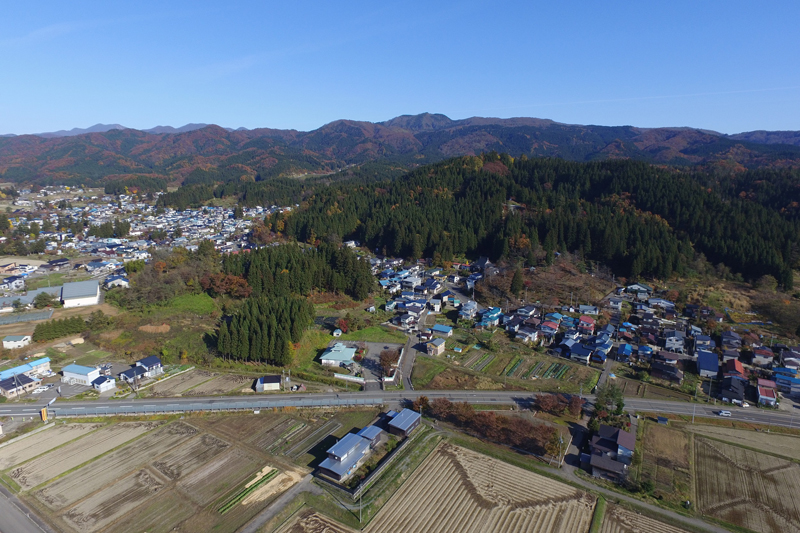
On the hill on the other side of the old Ushu Kaido road from the Kanazawa Castle ruins, there is the Jindate Ruins, a clue to the remains of the Kanazawa fence.
The Jinkan Ruins are located in the same location as the Otoriiyama Ruins, and building remains and artifacts from the same time as the Battle of the Three Years, but no confirmation has been obtained either. However, it is undoubtedly a site related to the Kiyohara clan, and it was designated a national historic site as a related site for the Otoriiyama Ruins.
Kanazawa fence ruins and Jinkan ruins <Information>
- Facility name: Kanazawa fence ruins/Jinkan ruins
- Location: Kanazawa area, Yokote City, Akita Prefecture
- Phone number: 0182-32-2403 (Yokote City Board of Education, Education and General Affairs Department, Cultural Properties Protection Division)
- You are free to walk around Kanazawa Park, but the Jinkan ruins are private property and cannot be entered.
- access:
- Railway: Approximately 20 minutes by bus bound for Omagari from Yokote Station on the JR Ou Main Line, then approximately 5 minutes' walk from Kanazawa Honmachi bus stop (Go Sannen Gassen Kanazawa Museum)
- Car: Approximately 20 minutes from Akita Expressway/Tohoku Chuo Expressway Yokote IC
Google Map
Later Sannen Battle Kanazawa Museum
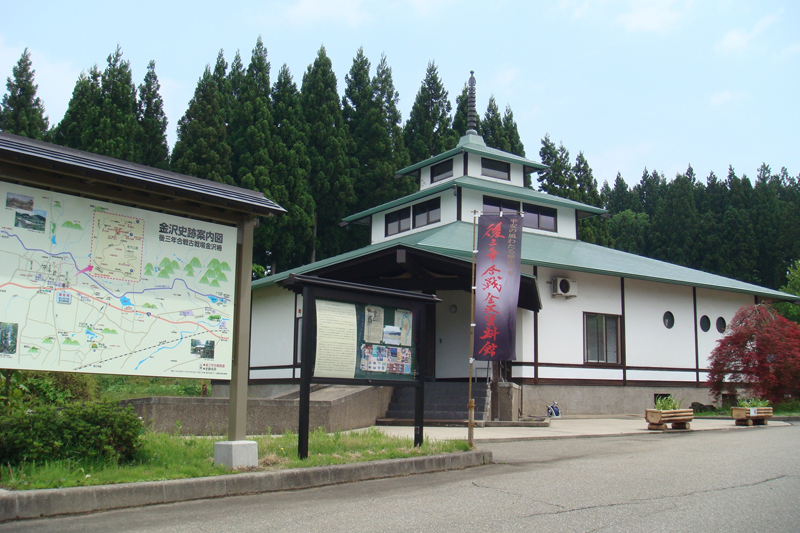
The ``Go Sannen Gassen Kanazawa Museum'' has a variety of items, including manuscripts of the ``Go Sannen Battle Pictures'' related to the ``Go Sannen Battle,'' sutra scrolls designated as cultural properties by Akita Prefecture, artifacts excavated during ruins surveys, and treasures from Kanazawa Hachiman Shrine. This is a facility where materials are displayed. Nearby is the Kanazawa Castle ruins, which is one of the estimated locations for the Kanazawa fence.
Otoriiyama Ruins <Information>
- Facility name: Post-Sanen Battle Kanazawa Museum
- Address: 102-4 Negoya, Nakano, Kanazawa, Yokote City
- Phone number: 0182-37-3510
- Opening hours: 9:00-17:00
- Closed: Every Monday (the next day if Monday is a holiday), December 29th to January 3rd
- Admission fee: 100 yen for high school students and above, free for junior high school students and below (Go Sannen Gassen Kanazawa Museum, Kamakura Museum,
- (Common to all 4 buildings: Yojiro Ishizaka Literary Memorial Museum and Yokote Park Observation Deck)
- access:
- Railway: Approximately 20 minutes by bus bound for Omagari from Yokote Station on the JR Ou Main Line, then approximately 5 minutes' walk from Kanazawa Honmachi bus stop (Go Sannen Gassen Kanazawa Museum)
- Car: Approximately 20 minutes from Akita Expressway/Tohoku Chuo Expressway Yokote IC
- URL: Kanazawa Museum of the Third Year Battle
Google Map
“Heian no Kaze Wataru Park” was developed in the area of “disturbed wild goose flight”

The famous ``Gankou no Ranji'' in the ``Go Sannen Gassen'' is a battle in which the outcome of the battle was determined by the way the geese flew.
Iehira deployed about 30 troops to hide in Nishinuma (Kanazawa Nakano, Yokote City), which had been a handsome swamp, to meet Minamoto Yoshiie's army heading towards the Kanazawa fence from the west.
The soldiers moved to launch a surprise attack on Yoshiie's army, which had been advancing without knowing this, but a group of geese above them disrupt the formation. Yoshiie saw this and realized that there was someone there, and the surprise attack failed.
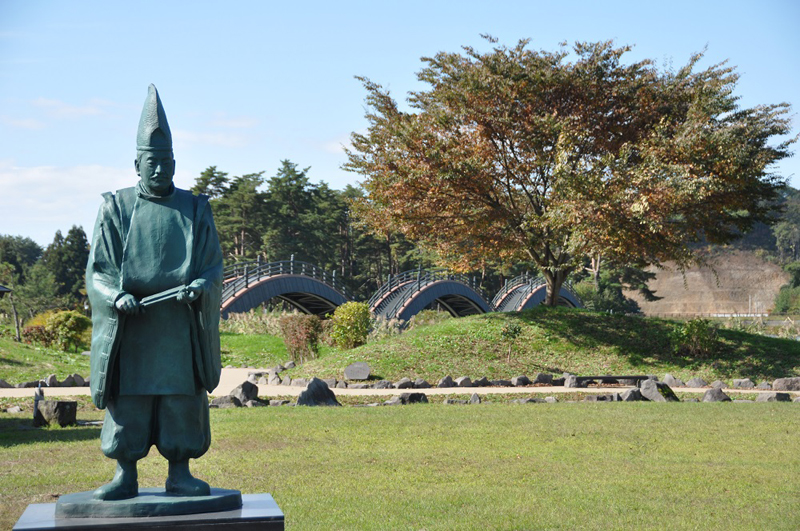
The ``Heian no Kazewata Park'' has been established in Nishinuma, which is said to be an ancient battlefield, and you can remember the past.
Otoriiyama Ruins <Information>
- Facility name: Heian no Kazewata Park
- Location: Yokote City Kanazawa Nakano Aza Sankan Weir
- Phone number: 0182-32-2725 (Yokote City Yokote Regional Bureau Yokote Regional Division)
- Free stroll/closed in winter
- access:
- Railway: Approximately 30 minutes by bus bound for Omagari from Yokote Station on the JR Ou Main Line, and get off at Sankanseki bus stop.
- Car: Approximately 10 minutes from Yokote Kita Smart IC on the Akita Expressway
- URL: Heian no Kazewata Park
Google Map
A military picture scroll that conveyed the Battle of the Third Years to future generations: ``Pictures from the Battle of the Third Years''
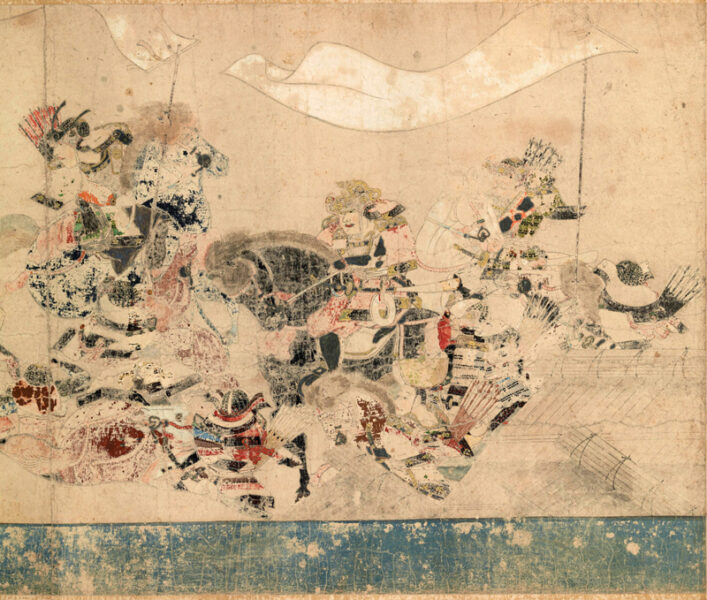
``Gosannen Gassen Ekoji'' was produced in 1347 with a preamble and an introductory note to each volume. All the pictures were drawn by Hida no kami Korehisa, and the lyrics are different for each volume. It is known that the author wrote it. Through this picture scroll, the outline of the Battle of Gosannen was passed on to future generations. It seems that there were originally six volumes, but the last three volumes currently exist, and they consist mostly of scenes from the Battle of Kanazawa Stockade.
``Go Sannen Gassen Picture Words'' is designated as an important cultural property of the country and is housed in the Tokyo National Museum. The entire collection is open to the public on the Digital Archive Tokyo National Museum ColBase (Integrated Search System for Collections of the National Institutes for Cultural Properties), and can be freely viewed on computers and smartphones.
There are also many manuscripts of "Oshu Go Sannen Ekoji", which are exhibited at places such as the "Go Sannen Gassen Kanazawa Museum" and the "Tokyo Fuji Art Museum."
- Go Sannen Gassen Picture Lyric Volume Volume 1 URL: Go Sannen Gassen Picture Lyric Volume Volume 1
- Go Sannen Gassen Picture Lyrics Volume Volume URL: Go Sannen Gassen Picture Lyrics Volume Volume
- Go Sannen Gassen Picture Lyrics Volume Volume 2 URL: Go Sannen Gassen Picture Lyrics Volume Volume 2



![Yokote's history and current cityscape, which has been the setting for many conflicts [Akita Prefecture] B9a8a63b4f44230DD4393E5583Fadc97](https://jp.neft.asia/wp-content/uploads/2023/07/b9a8a63b4f44230dd4393e5583fadc97-150x150.jpg)
!["Masuda-cho, Yokote City" is a preservation area lined with unique merchants with built-in houses [Akita Prefecture] 800RIMG3135](https://jp.neft.asia/wp-content/uploads/2023/07/800RIMG3135-150x150.jpg)
![[Series ⑥: The role of the first nine years and the role of the second three years] From the internal conflict in the Kiyohara clan to the battle for the family succession, the role of the third year after it was considered a private war Three years later 1](https://jp.neft.asia/wp-content/uploads/2023/12/c0edc0a05afd06375d9f91bd4b7c9472-150x150.jpg)

![The place you should not come and the phantom checkpoint "Nakura no Seki" written in waka poetry [Fukushima Prefecture] 0438-016](https://jp.neft.asia/wp-content/uploads/2022/11/0438-016-150x150.jpg)
![[Series ④: The role of the previous nine years and the role of the second three years] Mr. Kiyohara's participation in the war completely changed the flow of the role of the previous nine years 1000310_m](https://jp.neft.asia/wp-content/uploads/2023/11/1000310_m-150x150.jpg)
![[Series ⑤: The role of the previous nine years and the role of the second three years] 20 years after the role of the previous nine years, signs of war once again spreading to Ou Minamoto Yoshiie 2](https://jp.neft.asia/wp-content/uploads/2023/11/43170603cd506225e1e986eec406b569-150x150.jpg)
![The development of Akita city began in Tsuchizaki - Tsuchizaki Minato at the mouth of the Omono River, which developed as a center of distribution [Akita Prefecture] 33192efe1595a3309d4e9325ae7a5621](https://jp.neft.asia/wp-content/uploads/2023/12/33192efe1595a3309d4e9325ae7a5621-150x150.jpg)
